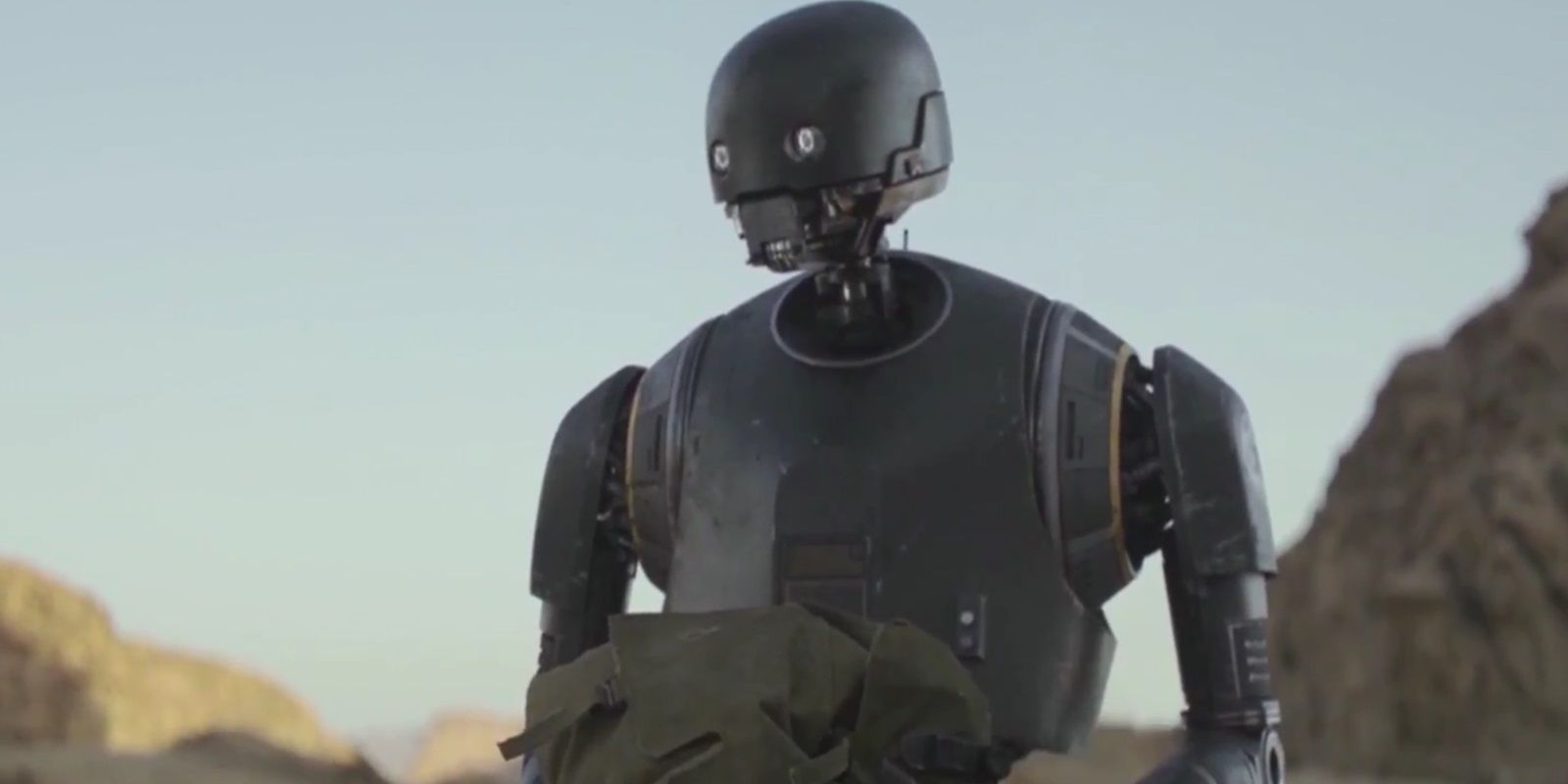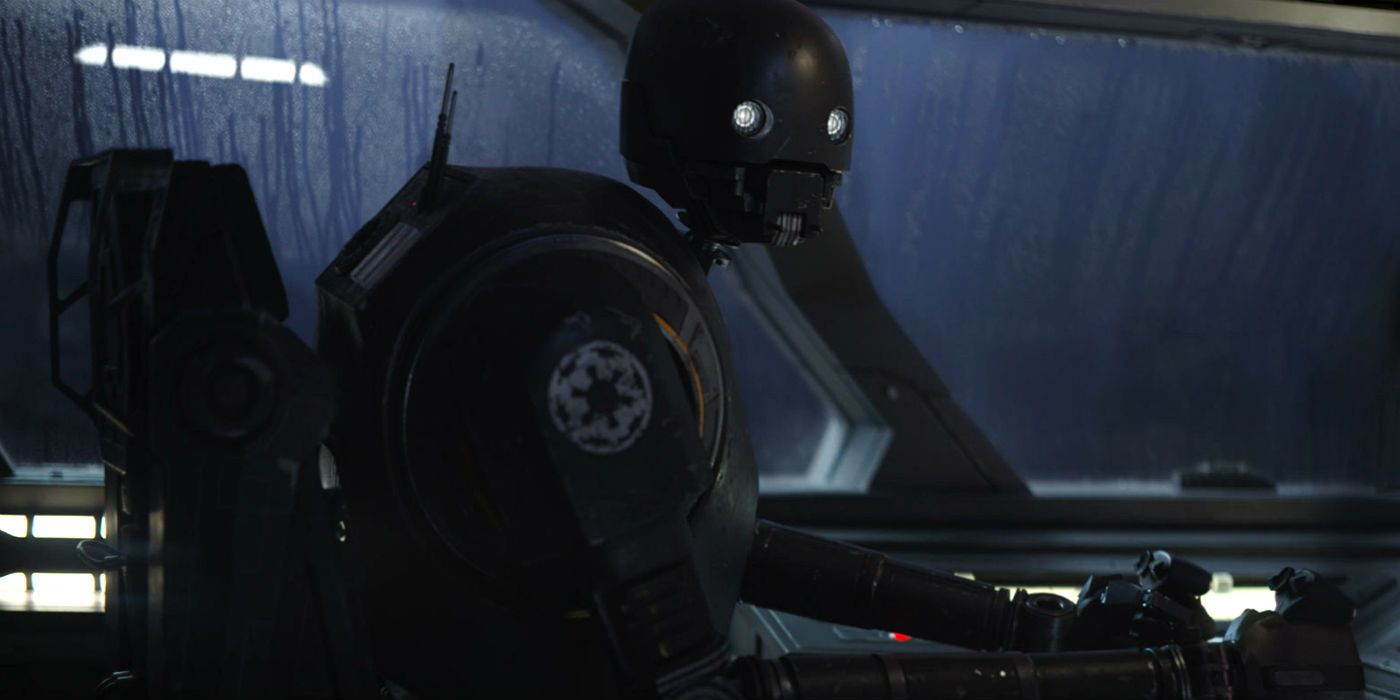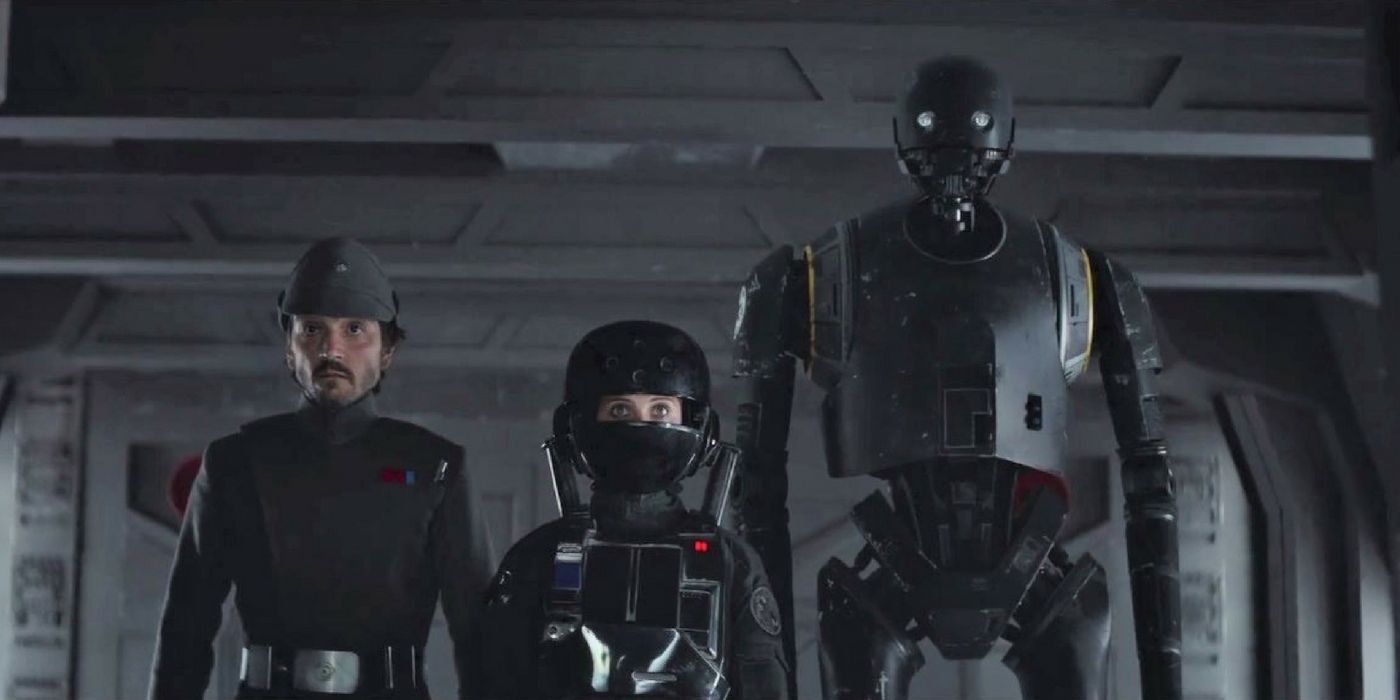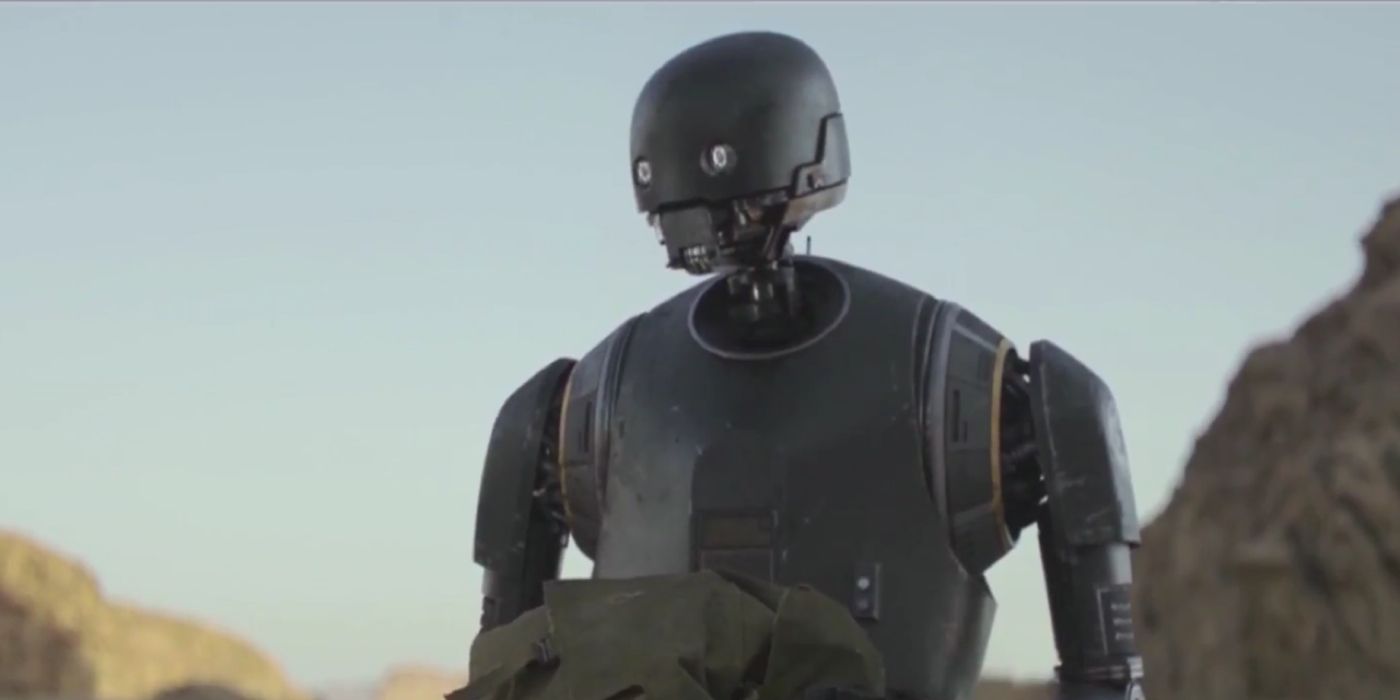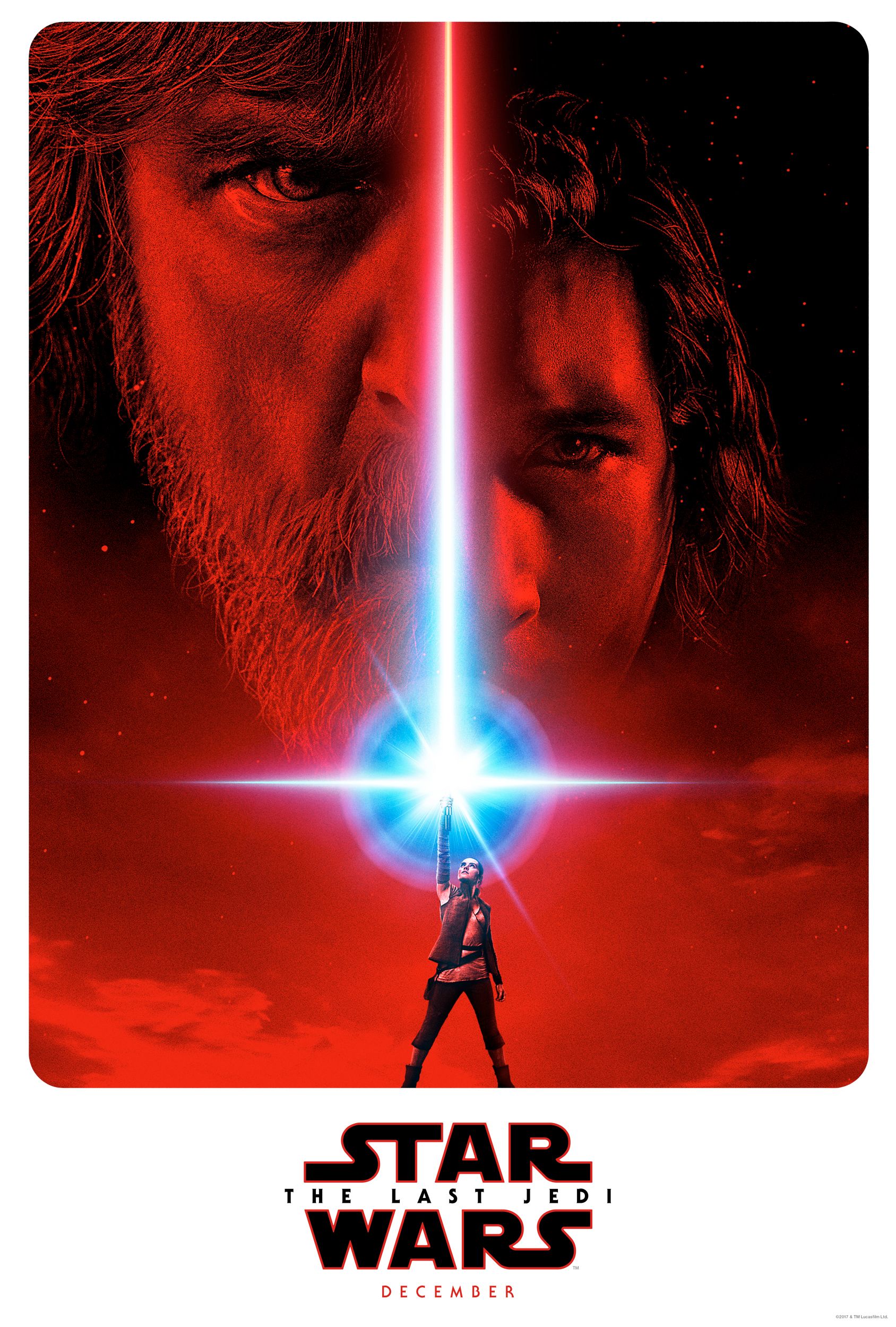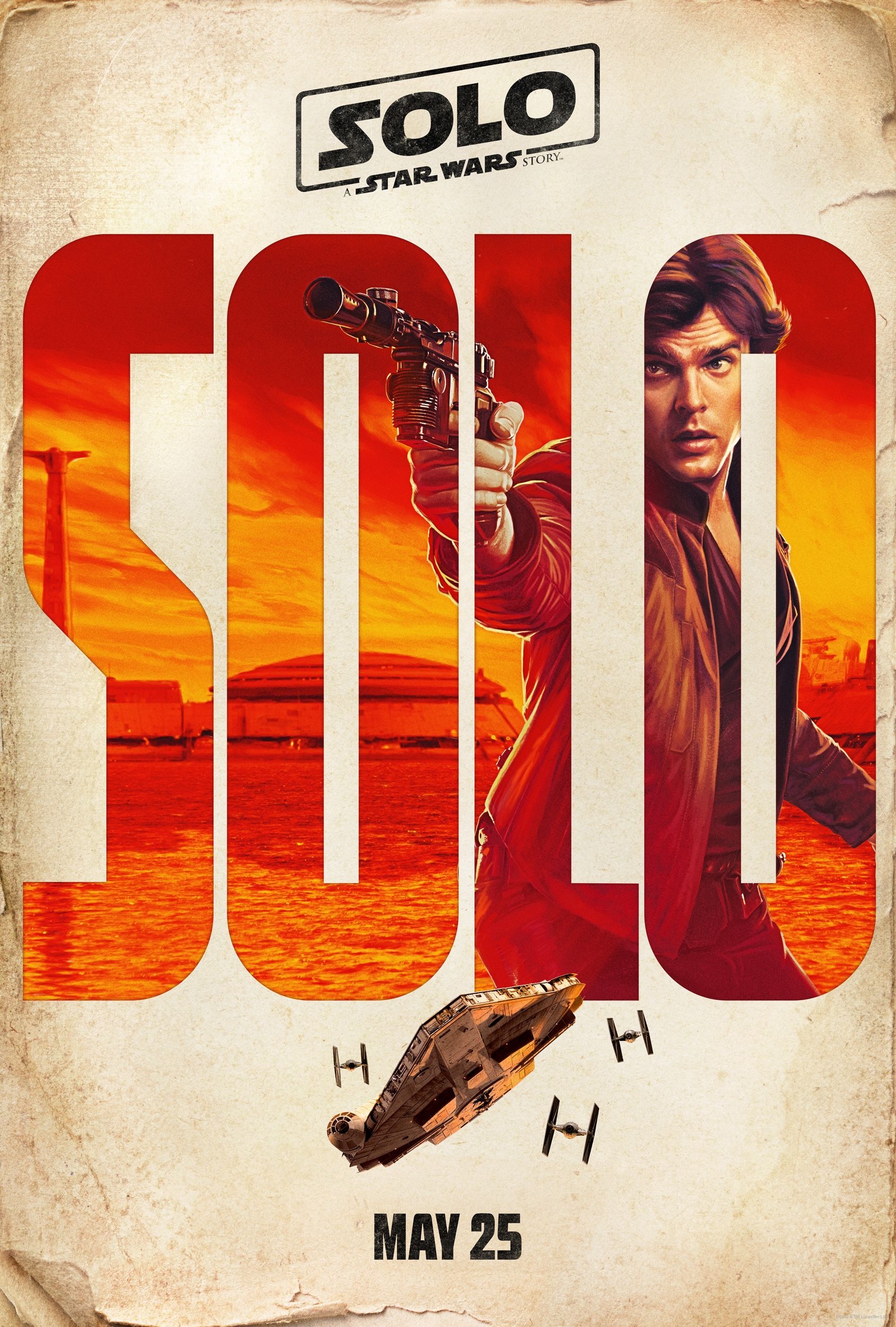Droids have always been an integral part of the Star Wars legacy. The first characters audiences met in the original film were R2-D2 and C-3PO, whose secret mission to deliver the Death Star plans to the Rebel Alliance had them cross paths with Luke Skywalker, kicking off one of the grandest adventures in all of cinema. As supporting characters, the robots never had substantial arcs like Han Solo and Darth Vader did, but they still became fan-favorites thanks to their personality, wit, and charm. It's impossible to think of Star Wars without the droids, and BB-8 looks to carry the torch forward after stealing every scene he was in during The Force Awakens.
For last year's spinoff/prequel Rogue One: A Star Wars Story, Lucasfilm introduced audiences to K-2SO, a reprogrammed Imperial protocol droid played via mo-cap by Alan Tudyk. Like BB-8 before him, K-2SO became one of the most beloved aspects of Rogue One, serving as the comic relief and injecting a bit of heart into the proceedings (especially towards the end). Of course, as a digital character, Tudyk was only part of the team that brought K-2SO to the big screen. The animation wizards at ILM played a sizable role as well, and the two sides came together to craft something unforgettable.
Earlier this month, Screen Rant had the opportunity to visit ILM for a press event to promote the home media release of Rogue One and spoke with Tudyk and ILM Animation Supervisor Hal Hickel about the techniques they used, and the infamous "should mo-cap performances be nominated for Oscars?" debate.
[To Tudyk] This wasn’t your first time playing a robot. You were Sonny in I, Robot.
Alan Tudyk: Right.
And I was wondering how the experiences compare and contrast.
Alan Tudyk: What was great on I, Robot was since it was a motion-capture role, I got to be on set the whole time and perform with Will [Smith] and Bridget [Moynahan]. But then after, we would yell ‘cut’ and we’re moving on to the next scene, they had to do a lot of different technical things that we didn’t have to do on this one. It’s progressed. So, it was a lot like just working on a movie. I was on stilts, so that was different. And I was in the motion-capture suit, so I didn’t look like everybody, but that actually even helped because it was a droid. So, it was just easier and I couldn’t believe I could just move around like that.
Hal Hickel: You were good on the stilts.
Alan Tudyk: I figured it out towards the end – towards the middle. Sand running was hard. I did have to do it. The first time I did it, we were in a battle situation, there was stuff going on – I don’t think that actually made it into the movie. And Gareth [Edwards] is just like ‘ALL RIGHT! NOW THERE’S AN AT-AT! EVERYBODY RUN!’ And we weren’t supposed to go that far in the scene and everybody’s running, so I’m running too. Oh my God, please don’t fall! But it worked out.
[To Hickel] And a related question for you. Animating characters for today’s movies, how much different is that compared to the prequels when you’re doing Jar Jar and stuff like that?
Hickel: The animator’s job, curiously, hasn’t changed a whole lot. Both in terms of the core of the animator’s job of being an observer and how we bring characters to life. But even technologically I’d say we use different software, computers are faster, but you’re kind of doing the same thing. You move things, you set keyframes, you adjust the in between frames. It hasn’t changed a lot. What’s changed is that more and more now, we’re partnering with actors to create characters. With Jar Jar, Ahmed Best did the voice, but we didn’t capture his movements. We just animated him by hand.
But starting, really for us at ILM, mainly with Davy Jones with what we did with Bill Nighy as Davy Jones. That experience really taught us all how important it is when you have a key character like that in a movie, and it’s a humanoid character that can really sit in the scene – they’re not 50 feet tall or two inches tall, they’re right there in the scene – how important it is to have the actor on-set with the other actors, but also to have the technology to be able to capture their motion really faithfully and apply it to the CG character. To have those two things, and a process that isn’t encumbering to first unit photography. We don’t want anything that’s going to slow the film down, we don’t want anything that’s going to interrupt Alan and his work. Yeah, he’s got to wear the computer pajamas and he’s got to wear those stilts, but outside of that, we try to stay out of everybody’s way by setting things up in a way that we could really get every bit of juice out of his performance and every nuance out of the movement of his body and apply that to K2 later on.
And do those techniques make it easier for the other actors on-set?
Hickel: Yeah. I mean, having everybody there together is better. For Alan it’s better. For the other actors as well, eye lines are correct – the magic is all happening there where it ought to be happening, rather than having Diego [Luna] and Jyn [Felicity Jones] looking at a tennis ball and someone shouting Alan’s lines from off-set, and then Alan on a motion-capture stage two months later doing it. That’s just not how you want to make a movie.
With motion-capture, there’s a debate in the film community about how much is the actor, how much is the animator. And also whether or not these performances should be considered for the Oscars. So I was wondering what you guys thought about that.
Tudyk: I would say they should be, because who doesn’t want an Oscar? But they should be a team. It would be a co-award because it is not just one or the other. [To Hickel] My art instructed your art. They meet. So, one wouldn’t work without the other.
Hickel: I agree with that. I will differ in one respect. Which is – and every character is different in terms of how much is the actor versus how much is the animator. Every film is different; some films, the filmmakers want to really change stuff downstream. That was not our goal on this film. We really skewed very closely to what Alan did and preserve that all the way through the process. What I would say is I think absolutely a motion-capture performance should be honored in the Best Actor or Best Supporting Actor category. Where I differ is, I think we already have an award for visual effects. So for a character who’s just amazing, who’s a motion-capture character – this is not motion-capture, but think of John Hurt as the Elephant Man. We don’t see his face in the whole film, but Oscar worthy performance. And, you could also nominate the make-up artist in the make-up category. That’s kind of how I think of it.
Tudyk: Wow. I like how you think [laughs]. Here’s a good way to do it. Watch the movie with the actor in his pajamas and stilts.
And if you’re still convincing that way, then yeah - you should win. We saw little clips of that in the presentation, and I believed you. I thought you were the droid.
Tudyk: Thank you very much!
Hickel: I don’t know why we went through all the effort to turn him into the robot.
You could just wear a Halloween mask.
Tudyk: Anyway, yes I agree. Oscars! At least a Golden Globe. Slam Golden Globes!
With the motion-capture, did you have any communication with Andy Serkis to discuss this process?
Tudyk: Like go to the master and bow at his feet and ask him what the hell he thinks? Hell no. [laughs] I’m kidding. He has a school called the Imagniarum where he teaches actors his method. And I don’t know what he teaches there, I know that he uses a lot of dots, which is one form of acting. It’s for certain characters where that would be helpful. I mean, ultimately, it’s just acting. At the end of the day, it’s acting. You’re restrained by the make-up of the character, which in this case was just stilts. It’s almost a theater piece in that way. I’ve worn stilts in two different plays that I’ve done. So, I think Andy Serkis has a lot of education in playing animals. Gollum was a living creature, and that’s what I responded to the most. Like, holy crap, how is that not alive? It looks so alive and his performance came through. It’s acting.
Hickel: [To Tudyk] Correct me if I’m wrong, since you’re the only actor in the room, but it seems to me that there are technical differences between acting on stage where maybe you’ve got to project for the back seats and acting in a three-camera sitcom versus acting in a film. There’s certain technical differences about how you handle things and how you approach what you’re doing. But, it’s all acting. In Warcraft, we had Terry Notary come in. He was our movement coach. But he wasn’t there to teach Tobey Kebbell and Rob Chazinski and those guys how to be motion-capture actors, he was just there to talk about how to be orcs. How to move like something that weighs 500 pounds and so forth. But there wasn’t any special training on that film for the actors with it being motion-capture. It was just about acting and movement.
And when developing K2 and doing the animation, was there any specific technology that had to be created to make what was on the screen possible?
Hickel: Not really. One thing we did that wasn’t specific to K2 that just has to do with an initiative we’re pushing more generally as a studio had to do with real-time rendering. We want to leverage the amazing things that console games and real-time game rendering engines can do these days. They don’t generally output stuff that’s quite at the level of what we’re usually doing in films with our much longer offline renders, but we know that the two are kind of converging in terms of quality. So, I think we picked three shots in the film of K2 where we rendered him out of a real-time engine and composited him into the film rather than using Render Man. And again, that wasn’t something we had to do to accomplish K2, it was just more something that we want to push forward in the studio generally. Outside of that, I wouldn’t say there was any technical mountain we had to climb to make K2 possible.
[To Tudyk] One last question. Since K2 is digital, you could possibly come back in another Star Wars movie to play a different character.
Tudyk: Right.
Is that something you would like to do?
Tudyk: Of course. This has been a blast. I’m still absorbing it. Truly, it’s so huge. I would love to. This is one of the best times I’ve ever had on a movie. We went all over the world, and the attention to detail is amazing. Everyone who works on it – everybody – is excited about the job. Movies can be hard, you know, as far as it’s raining all the time and you’re dealing with issues that are frustrating. But, on this movie, even those moments where you’re like ‘Ugh. I’m so tired and it’s a 14-hour day,’ you look around and it’s like, ‘I’m in a Star Wars movie.’ Oh my God. Look at all these aliens – look at these amazing, amazing aliens that are just walking through the background. Like, that character doesn’t even have a line.
And he’ll get a spinoff film one day, too [laughs].
Tudyk: [laughs] Definitely an action figure. They belong to a religion they’ve created. It’s so thoroughly thought out and beautifully executed that it buoys you and it doesn’t stop after it’s shot. It goes all the way through the movie coming out. We went and got to watch the screening at Skywalker Ranch in their special theater. I mean, come on. I’m talking to you, my luggage is in the Ritz right now. I do independent movies where they’re like, ‘We didn’t get you a trailer, but you could change in that gas station bathroom.’ And those exist simultaneously.
Thank you.
Tudyk and Hickel: Thank you!
Rogue One: A Star Wars Story hits Blu-ray April 4, 2017.

